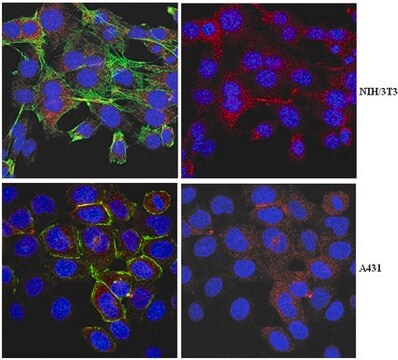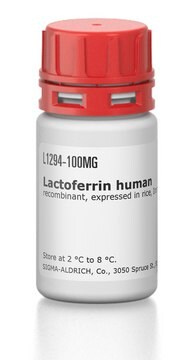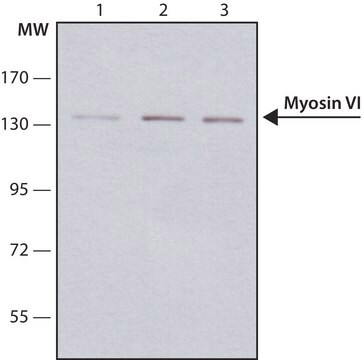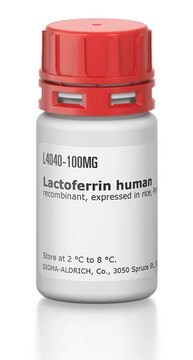Wichtige Dokumente
M5187
Anti-Myosin VI (KA-15) antibody produced in rabbit
affinity isolated antibody, buffered aqueous solution
Synonym(e):
Anti-DFNA22, Anti-DFNB37
About This Item
Empfohlene Produkte
Biologische Quelle
rabbit
Qualitätsniveau
Konjugat
unconjugated
Antikörperform
affinity isolated antibody
Antikörper-Produkttyp
primary antibodies
Klon
polyclonal
Form
buffered aqueous solution
Mol-Gew.
antigen ~150 kDa
Speziesreaktivität
rat, canine
Methode(n)
indirect immunofluorescence: 1:75 using cultured rat NRK cells
microarray: suitable
western blot: 1:1,000 using a whole extract of cultured dog MDCK cells
Versandbedingung
dry ice
Lagertemp.
−20°C
Posttranslationale Modifikation Target
unmodified
Angaben zum Gen
human ... MYO6(4646)
Allgemeine Beschreibung
Immunogen
Anwendung
- in immunoblotting
- in immunocytochemistry
- in immunofluorescence
- immunohistochemistry
- proximity ligation assay
Biochem./physiol. Wirkung
Physikalische Form
Haftungsausschluss
Sie haben nicht das passende Produkt gefunden?
Probieren Sie unser Produkt-Auswahlhilfe. aus.
Lagerklassenschlüssel
10 - Combustible liquids
WGK
WGK 3
Flammpunkt (°F)
Not applicable
Flammpunkt (°C)
Not applicable
Hier finden Sie alle aktuellen Versionen:
Besitzen Sie dieses Produkt bereits?
In der Dokumentenbibliothek finden Sie die Dokumentation zu den Produkten, die Sie kürzlich erworben haben.
Unser Team von Wissenschaftlern verfügt über Erfahrung in allen Forschungsbereichen einschließlich Life Science, Materialwissenschaften, chemischer Synthese, Chromatographie, Analytik und vielen mehr..
Setzen Sie sich mit dem technischen Dienst in Verbindung.







